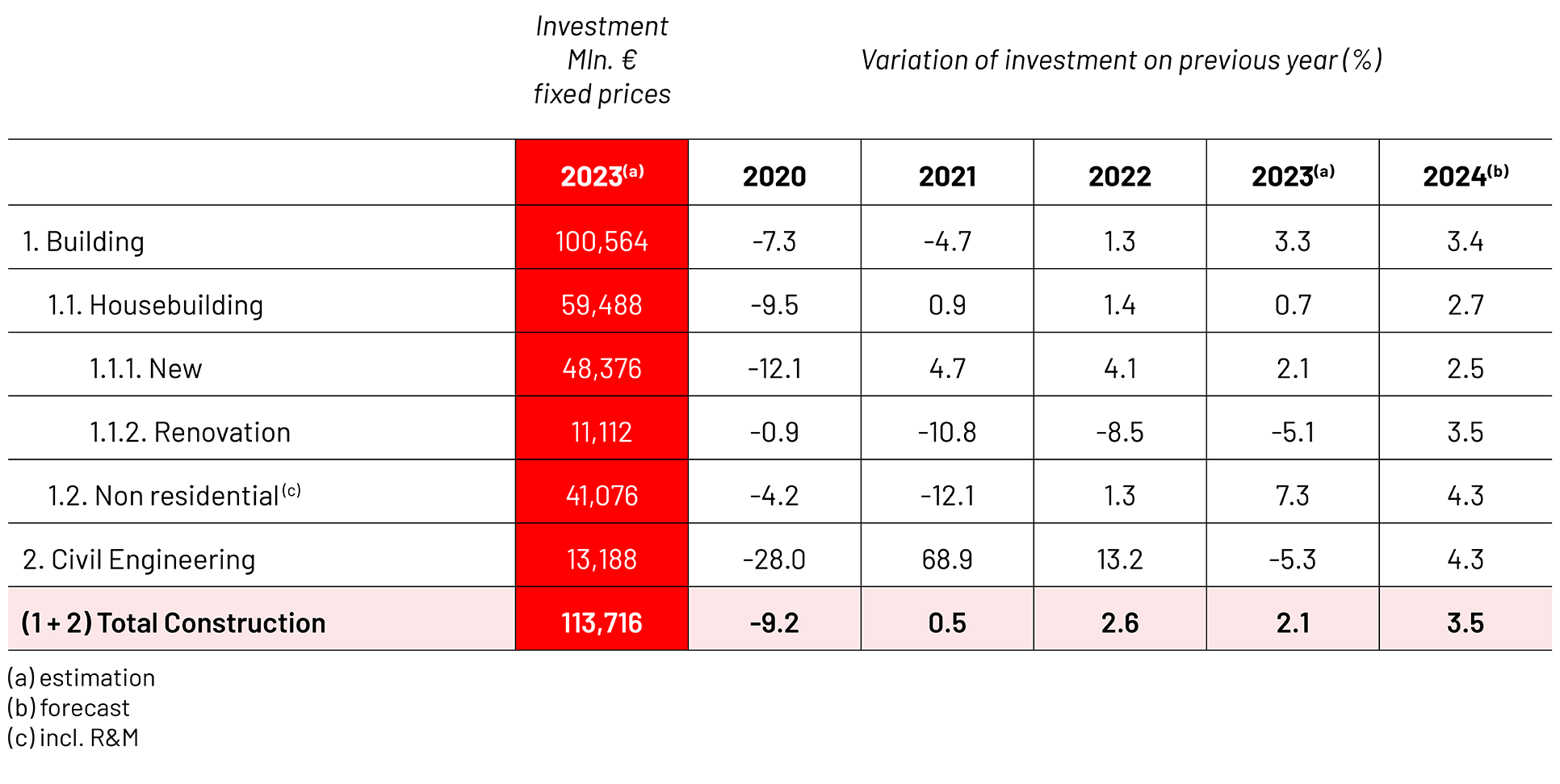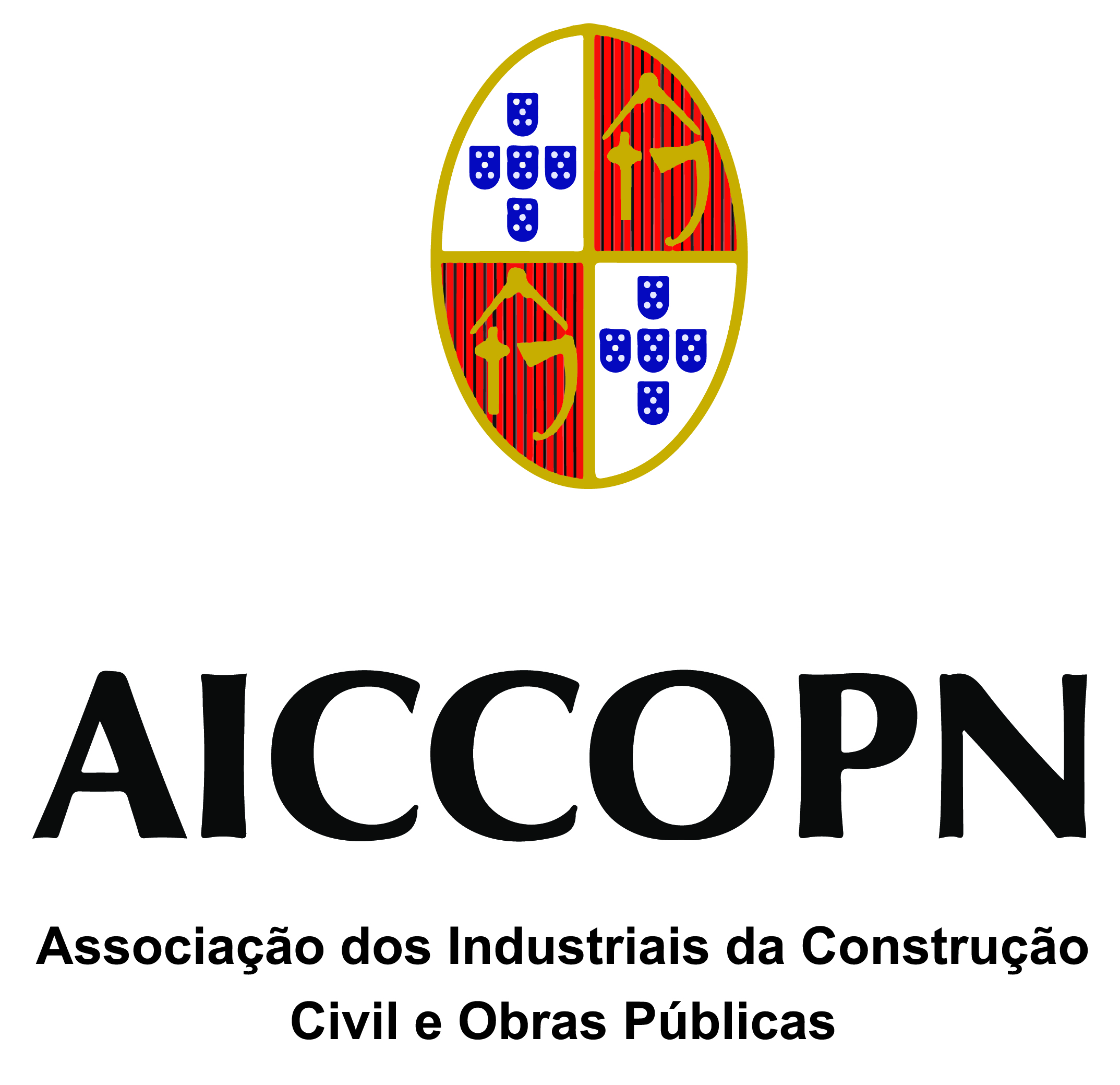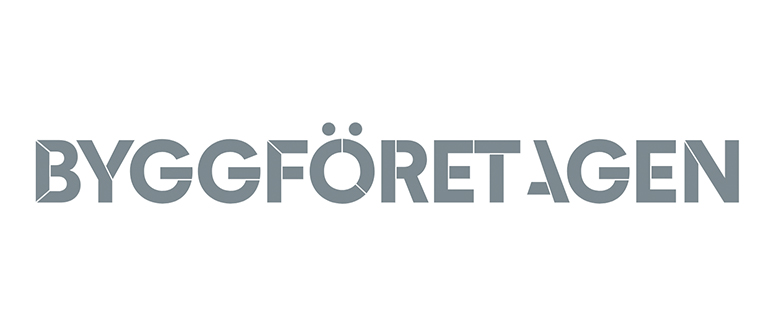Overall construction activity
In 2023, construction activity continued to play a key role in the Spanish economy, accounting for 10% of GDP in terms of GFCF and 5% of GDP in terms of GVA.
However, the pace of construction activity was slower than expected. The implementation of the National Plan for Recovery and Resilience should have already led to a significant reactivation of the sector, given the objectives of renovation of buildings and the planned investments, mainly in mobility and environmental infrastructure, but last year's results didn't meet the foreseen expectations. This scenario can be attributed to several factors.
With regard to public works contracts, the lack of an adequate price review system is having a negative impact on companies in situations of significant increases in the price of materials, as the sector has been suffering since the end of 2010. Furthermore, this situation reduces the full potential of the public procurement market. The CNC has urged the Spanish authorities to adopt an appropriate price review mechanism to minimise the impact of price increases (materials, energy and labour costs) in current and future public contracts, both in construction and civil engineering.
In the area of building renovation, the National Recovery and Resilience Plan allocates around 10% of its budget to this objective, but the rhythm of implementation of the various programmes and the coordination of the different levels of public administration in the allocation of funds to the real economy and final beneficiaries could have been more agile.
The shortage of workers, especially young people, willing to enter the sector at a time when the active workforce is ageing is another cause for concern. Employment in construction in 2023 (1 384 800 workers) increased by 3.8 % compared to 2022. Only 9% of construction workers are under 30 years of age, compared to 25% in 2008.
The forecast for 2024 is for moderate growth in construction activity, driven by the completion of civil engineering works tendered in 2022 and 2023. However, 2024 is expected to be a restrictive year for new public tenders in civil engineering following the end of the tendering programme included in the National Recovery and Resilience Plan, with the contraction expected to be more pronounced in 2025.
In 2024, new housing construction is expected to pick up after the slump in 2021-2023. In addition, the announcement of the government's commitment to promote the creation of new housing for social rent or at affordable prices suggests a more promising scenario in this segment than in recent years, particularly from 2025 onwards.
Housebuilding
The number of "visados de dirección deobra" in terms of new dwellings in 2023 is stated at 107,934, -0.9% compared to last year. In 2023, less than 100,000 new units will be built compared to the 297,000 new households created, according to the National Statistics Institute; these figures show the existing housing deficit that needs to be addressed.
With regard to the property market, in 2023 there will be a fall in sales of around -9%, although the fall in the sale of new homes will mean a fluctuation of around -5.5%. With regard to the purchase of dwellings by foreigners, this continues to be relevant in 2023, representing around 15% of the total and amounting to 90,000 units in Q3 2023, of which 13,000 are new.
Sector analysts maintain a positive outlook as long as the employment rate does not fall and demand for new housing remains under pressure.
As far as the renovation segment is concerned, it's worth recalling that the National Recovery and Resilience Plan allocates around 10% of its budget to an ambitious renovation and urban renewal plan, where the renovation of housing, linked to the improvement of energy efficiency, is the main field of action; the expected positive impact on the sector's activity should really be felt in 2024; unfortunately, the results in 2023 were not those expected by the sector, as can be seen from the number of "visados" for the renovation of housing, which fell by 7.8%.
Non-residential construction
Activity in non-residential public works will be boosted in 2022 and 2023 by an increase in the volume of public tenders, which will be reflected in the 2024 results. However, as regards the private sector, the decrease in the number of "visados" in this area in 2023 leads us to expect a reduction in activity in 2024.
GDP 2023
BILLION
POPULATION 2023
Total investment in construction in 2023
BILLION
Civil engineering
In 2023, the volume of public tenders amounted to €16,971 million, mainly due to investments included in the National Recovery and Resilience Plan; railway and road projects received the largest share of investment.
An investment deficit in public works has been observed since 2011. Although the graph shows a general increasing trend, it is important to note that the volume of investment in this segment in 2015, the starting point for the graph, was only €5,762 million, a very low figure. The stimulus provided by the Plan for 2021-2023 has alleviated this situation to some extent, but the investments that the country needs, particularly in sustainable mobility, water and the environment, and energy, require that the budgetary insufficiency of the last decade on the part of public administrations be reversed to allow an upward trend in investment.
Prices of construction materials
In 2023, the exorbitant price increases observed in 2020, 2021 and 2022 were somewhat mitigated, albeit to varying degrees depending on the material, as cement, for example, showed a significant increase compared to the previous year. Despite the easing of the inflationary situation, it is important to highlight that the most representative materials in the construction cost structure, including energy, continue to record significantly higher prices compared to those recorded in 2020; for example, according to the indices published by the National Statistics Institute for the revision of prices in public contracts, in the period Q1 2020 - Q2 2023* the increase in the price of bituminous materials was 47%, copper 56%, ceramic materials 51%, iron and steel materials 46%, cement 42%, aluminium 40% and energy 42%. (*Latest available data).
As stated at the beginning of this report, the CNC has urged the Spanish authorities to adopt an appropriate price review mechanism to minimise the impact of price increases (materials, energy and labour costs) in current and future public contracts, both in construction and civil engineering. This aspect is fundamental for the correct development of the public procurement market and therefore for the performance of the construction sector.
Per cent variation of investment in real terms of previous year

Number of “Visados de dirección de obras”-number of new dwellings



































